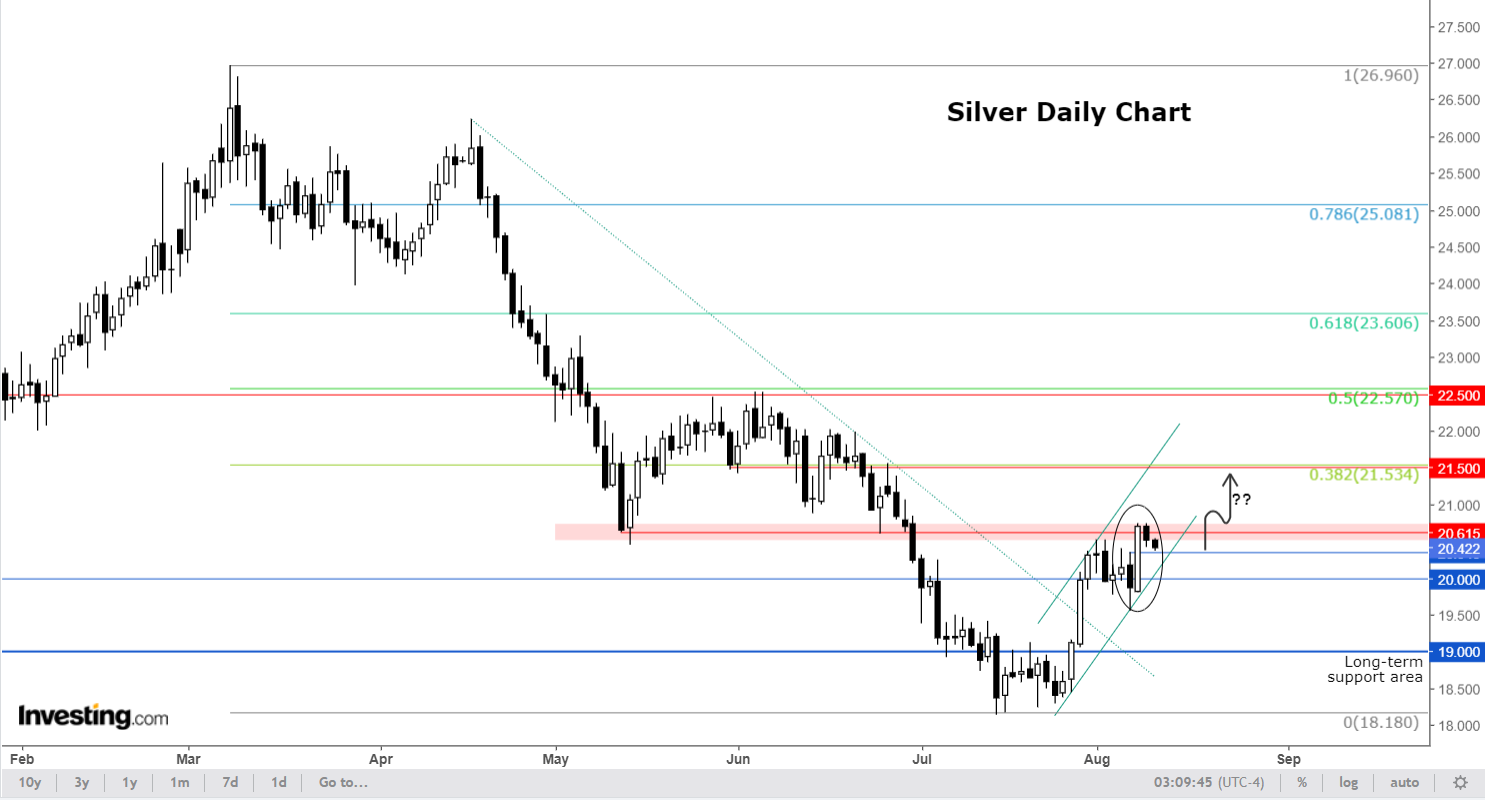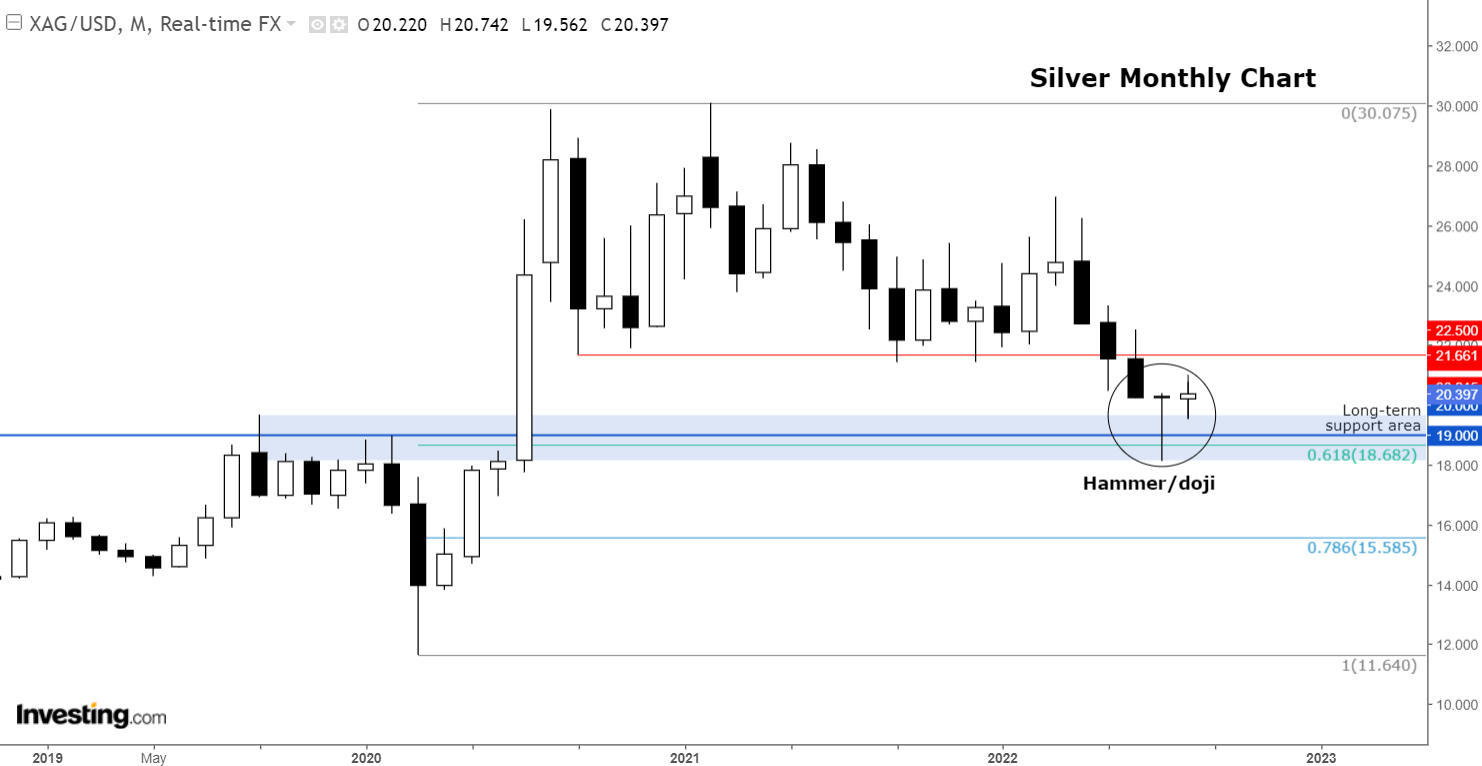- All eyes on U.S. CPI
- Precious metals have made post-nonfarm payroll highs
- Silver’s hammer monthly candle off key long-term support suggests low might be in
Precious metals have been able to make new post-nonfarm payroll (NFP) highs at the start of this week, which is something you would not expect to see given how the likes of the USD/JPY and government bonds reacted on Friday.
The fact that gold and silver have expanded their recent gains (albeit off their weekly highs at the time of writing), suggests that the jobs report has not materially impacted the market’s view that the U.S. Federal Reserve will slow the interest rate hikes before going in reverse in 2023.
Perhaps the market is waiting to see how strong or otherwise July’s core inflation print will be today. But if the NFP report is anything to go by, we may well see investors buy any CPI-related dip in gold and especially silver.
How will CPI impact gold and silver?
I reckon a small beat on headline CPI will not lead to a big rise in the dollar, for as long as it eases from the 9.1% annual inflation print we saw in June. Analysts expect it to have eased to 8.7% in July.
Core CPI is seen rising to 6.1% in July from 5.9% in June. For as long as core CPI is around the expected figure, or better still sharply lower, precious metals could potentially end the day higher.
It is worth mentioning that the next Fed meeting is around 6 weeks away. So, the market will not put too much emphasis on a very small beat. However, if inflation proves to be too hot then it is difficult to remain bullish on metals in the short-term outlook, especially with both gold and silver testing some key technical levels.
Silver in bullish channel
After a nice recovery in the latter parts of July, silver started August with some bullish momentum. However, it has now retreated a little after reaching a key resistance level around $20.60ish, which had been support on a couple of occasions earlier this year before prices dropped. The so-far small pullback from this area leaves some question marks about the directional bias.

Still, silver remains inside a bullish channel and was testing short-term support around $20.37 at the time of writing. Unless it breaks out from this channel to the downside, the path of least resistance would technically remain bullish. Thus, even if we see a bit further weakness in reaction to today’s eagerly anticipated US CPI report, for as long as the channel holds on a daily closing basis, this will keep the bulls happy.
Silver’s monthly hammer is a bullish sign
If we zoom out to the long-term monthly chart, we can see that in July silver created a nice hammer/doji candle off key long-term support around $19.00. 
This type of a candle is typically found near the bottom of a trend, implying that silver may have reached a low.
How and when to trade silver?
Well, that all depends on the level of risk appetite each trader has. For very aggressive traders, today’s dip offers an opportunity to take advantage of the new upward trend. This group of traders will not be too concerned about the CPI release.
But for the more conservative traders, well, they may wish to wait until after the US CPI report is out of the way before potentially looking for new log setups. These traders would like silver to hold above July’s high ($20.37) following the CPI release or ideally by the close of play on Wednesday as this would suggest the bulls are still in charge of price action following last month’s reversal.
In this scenario, the next bullish objective would be the $21.50-$21.66 range. The lower end of this range marks the 38.2% Fibonacci level (see the daily chart), while the upper end was previously a key support level as one can see from the monthly time frame.
However, in the event US CPI is so strong that it leads to a breakdown of the channel, then at that point all bets are off. Bullish traders will then need to wait for appropriate bullish price action in the days ahead, before looking to potentially get long again.
Silver no longer ideal market to short
Given silver’s big decline earlier in the year and the fact that it has shown some reaction from a long-term support zone between $19 to $20, I don’t think this is an ideal market for the bears to take advantage of as the downside could be limited.
Disclaimer: The author currently does not own any of the instruments mentioned in this article.
